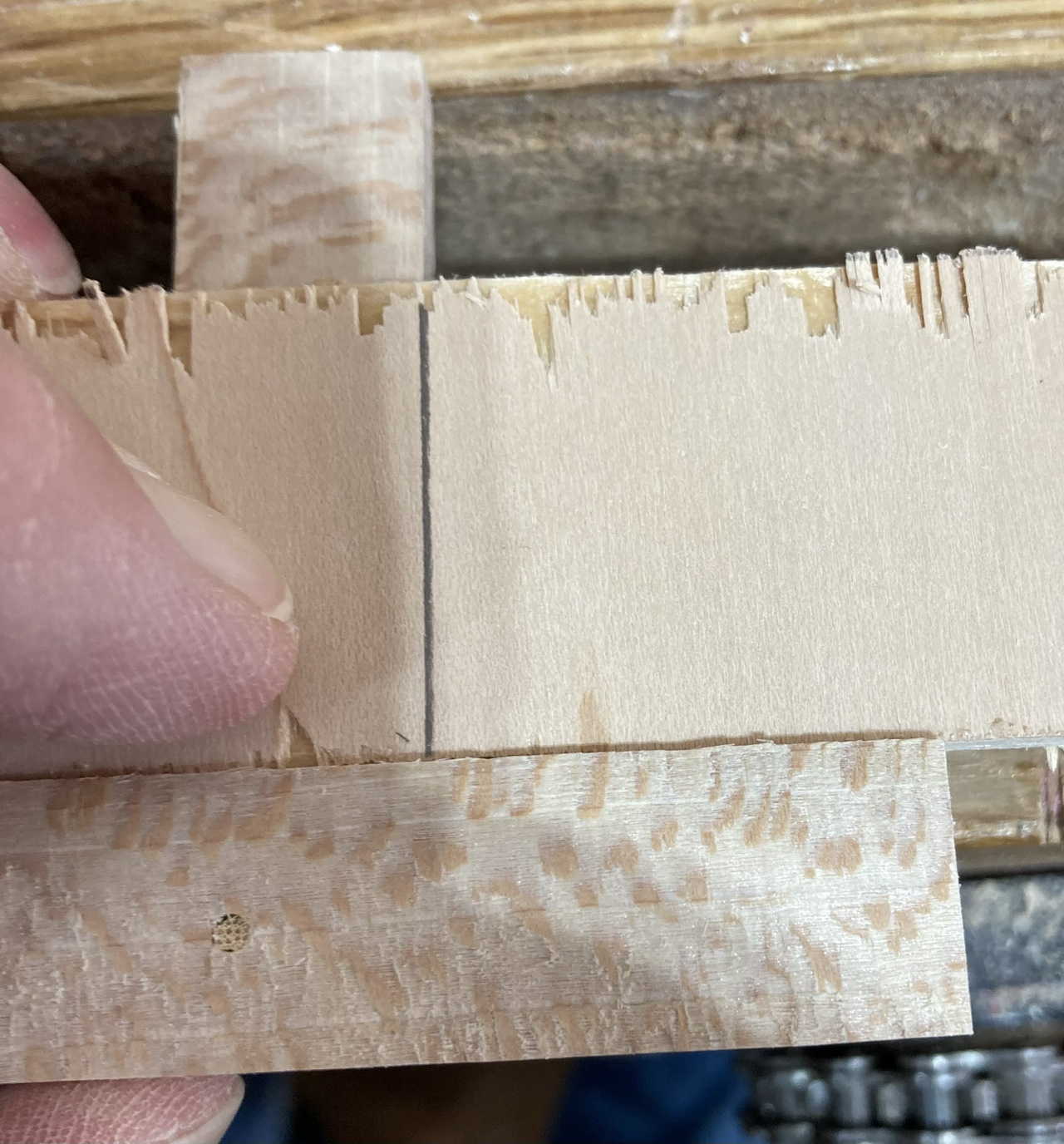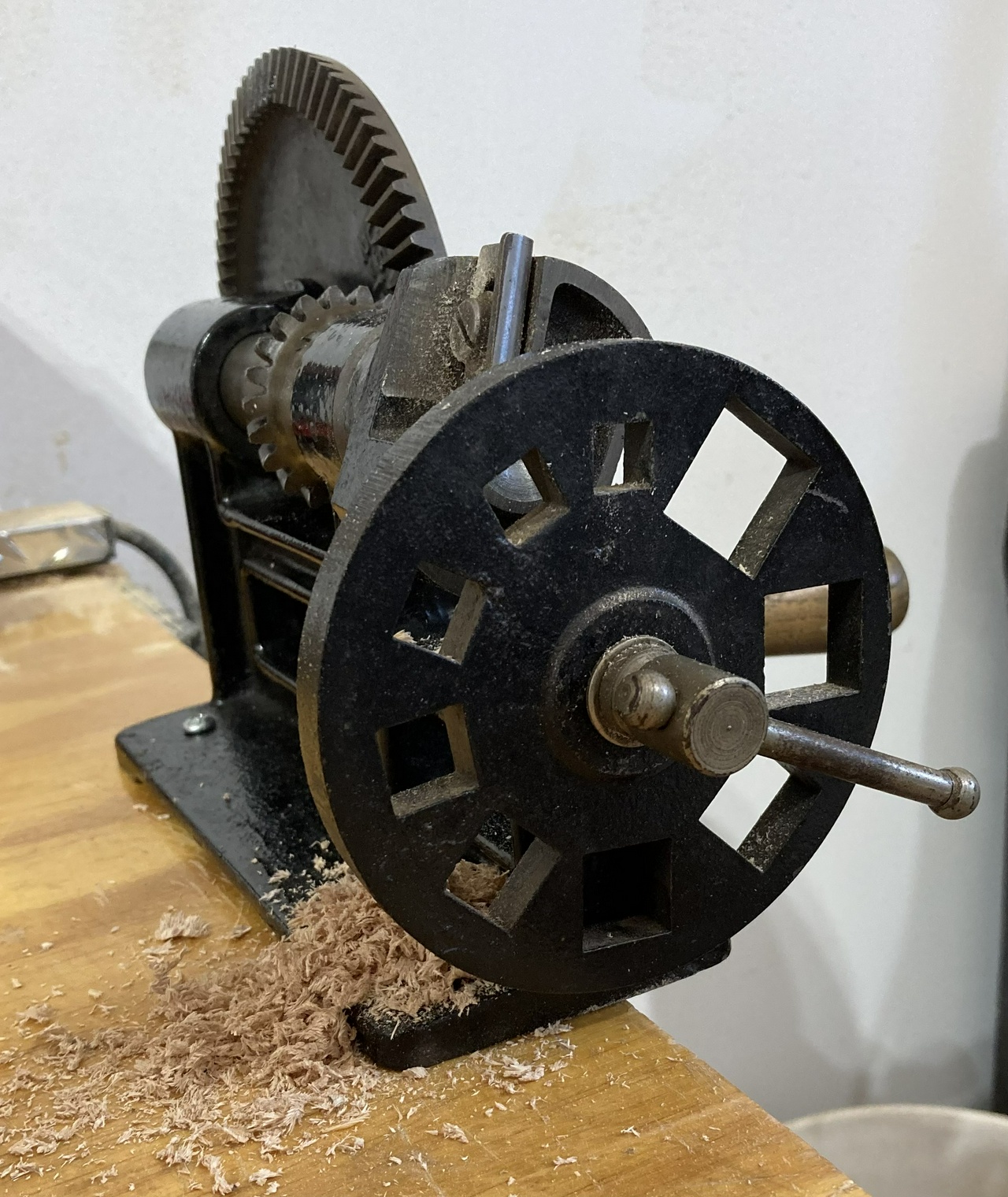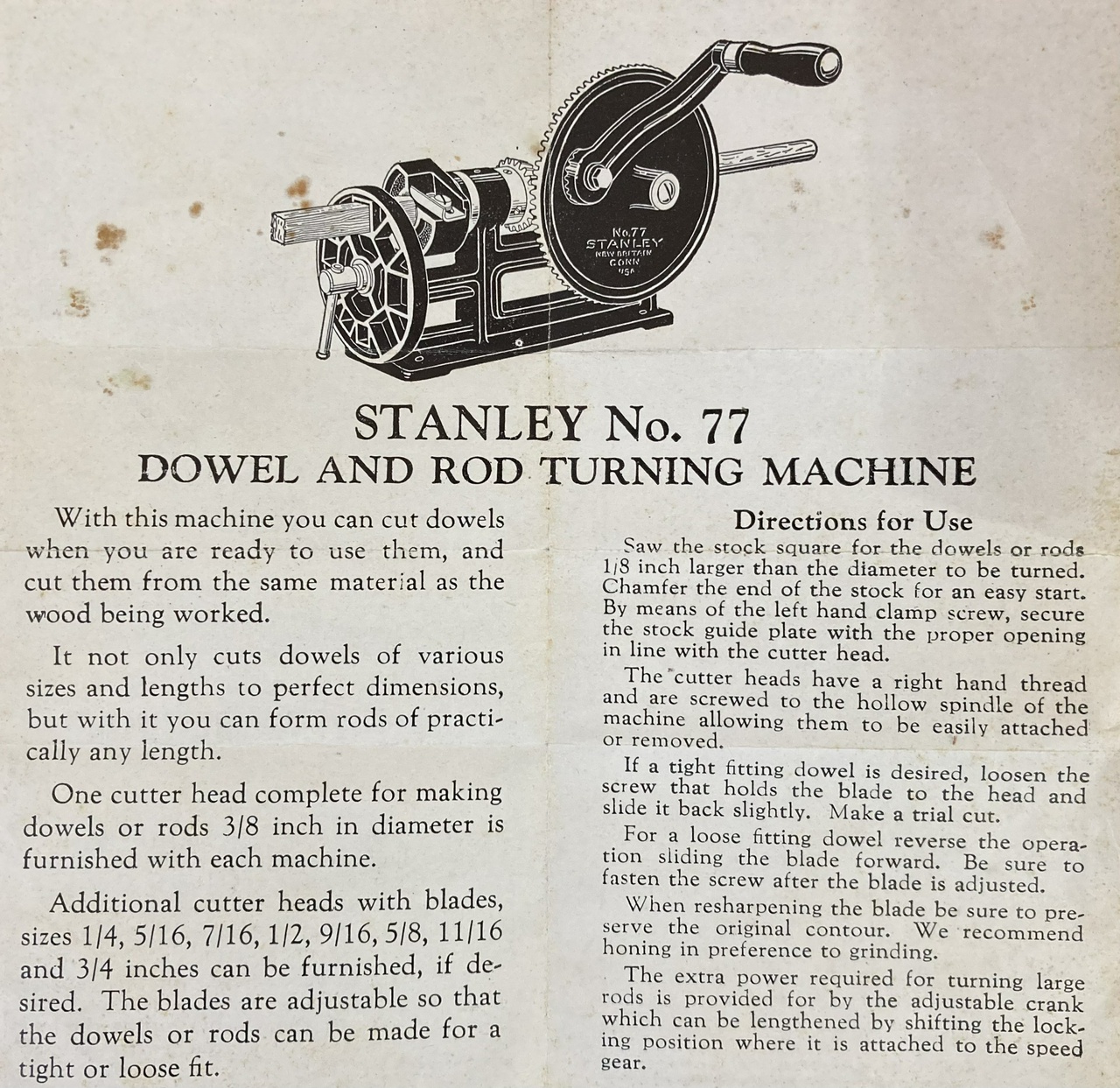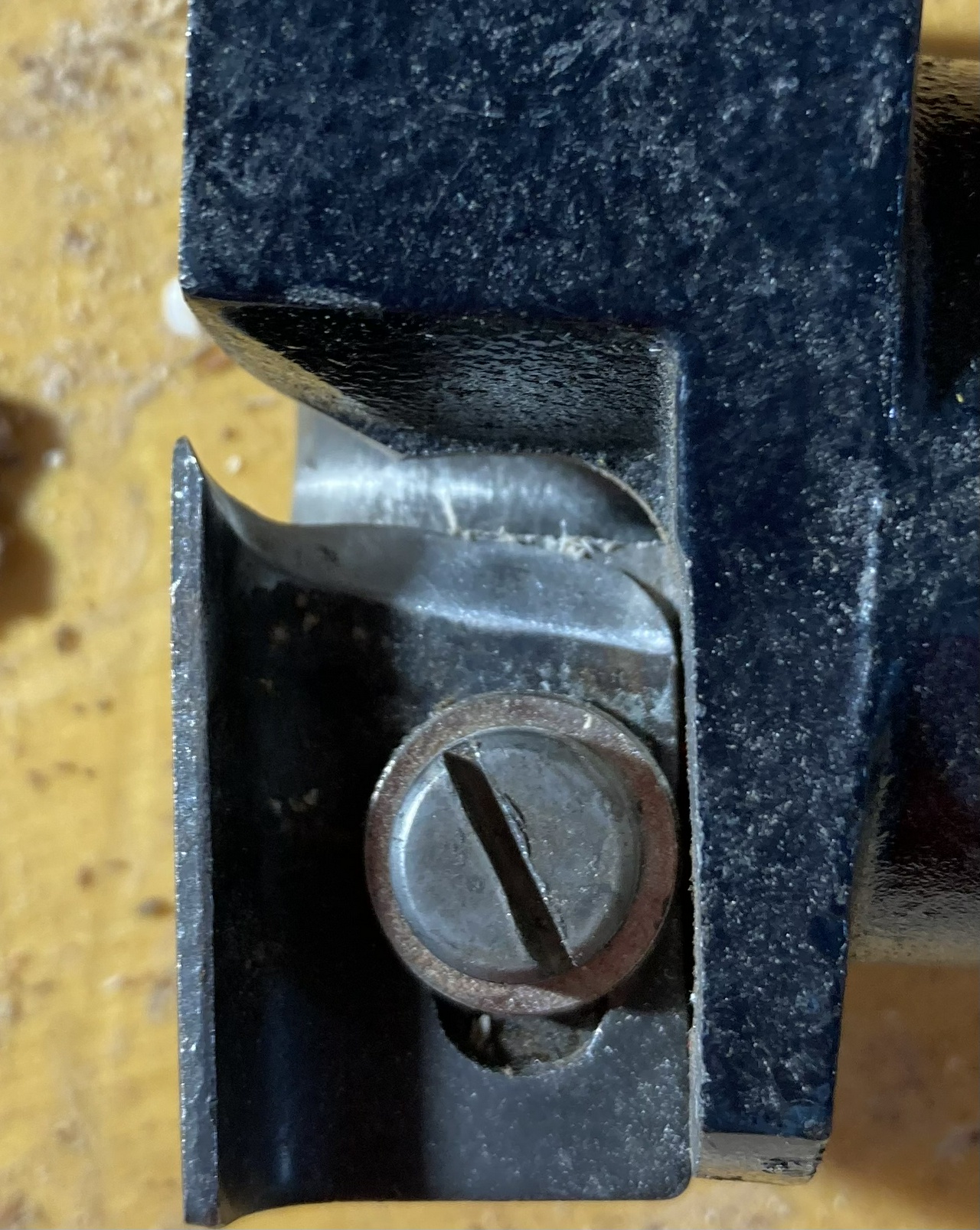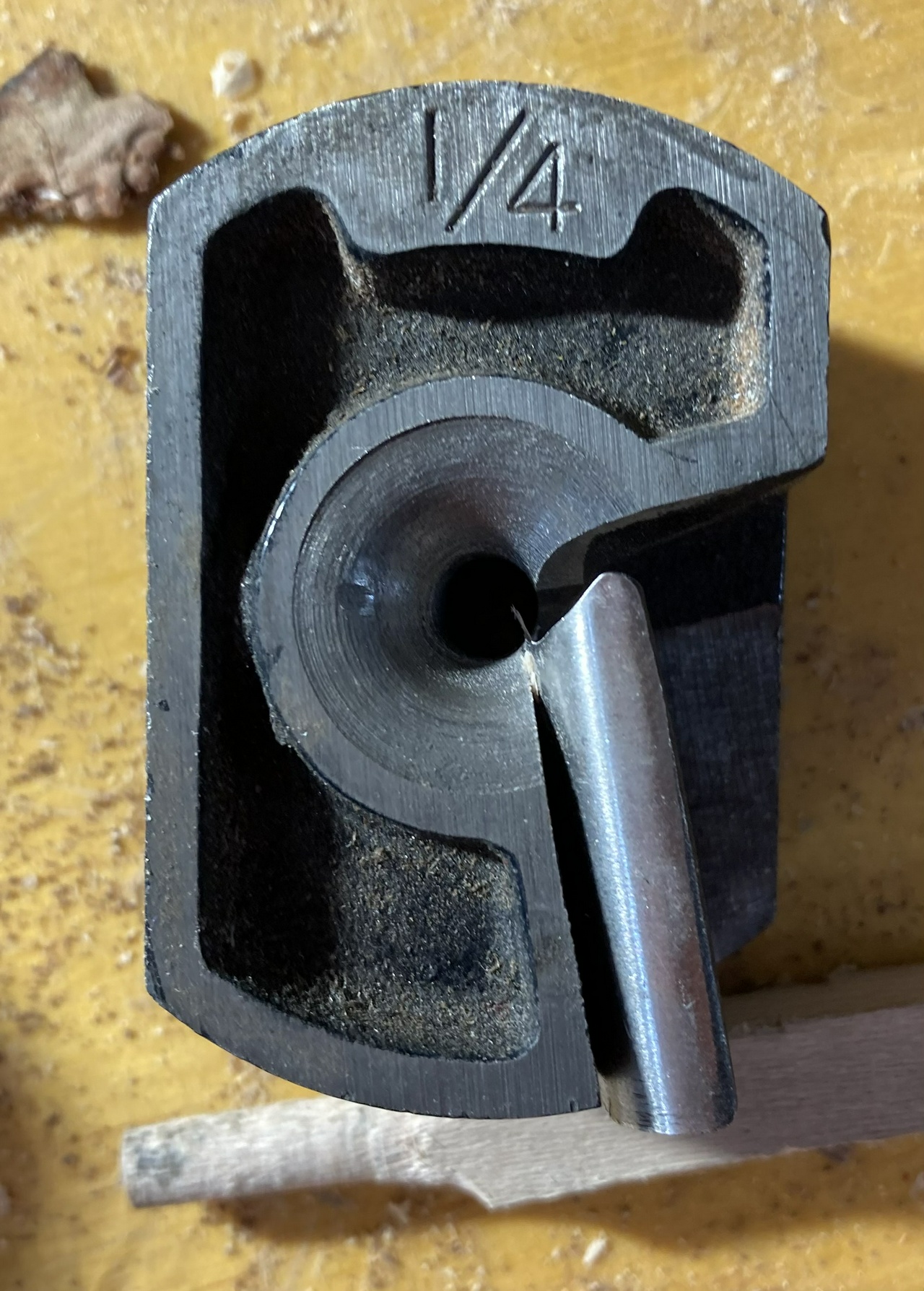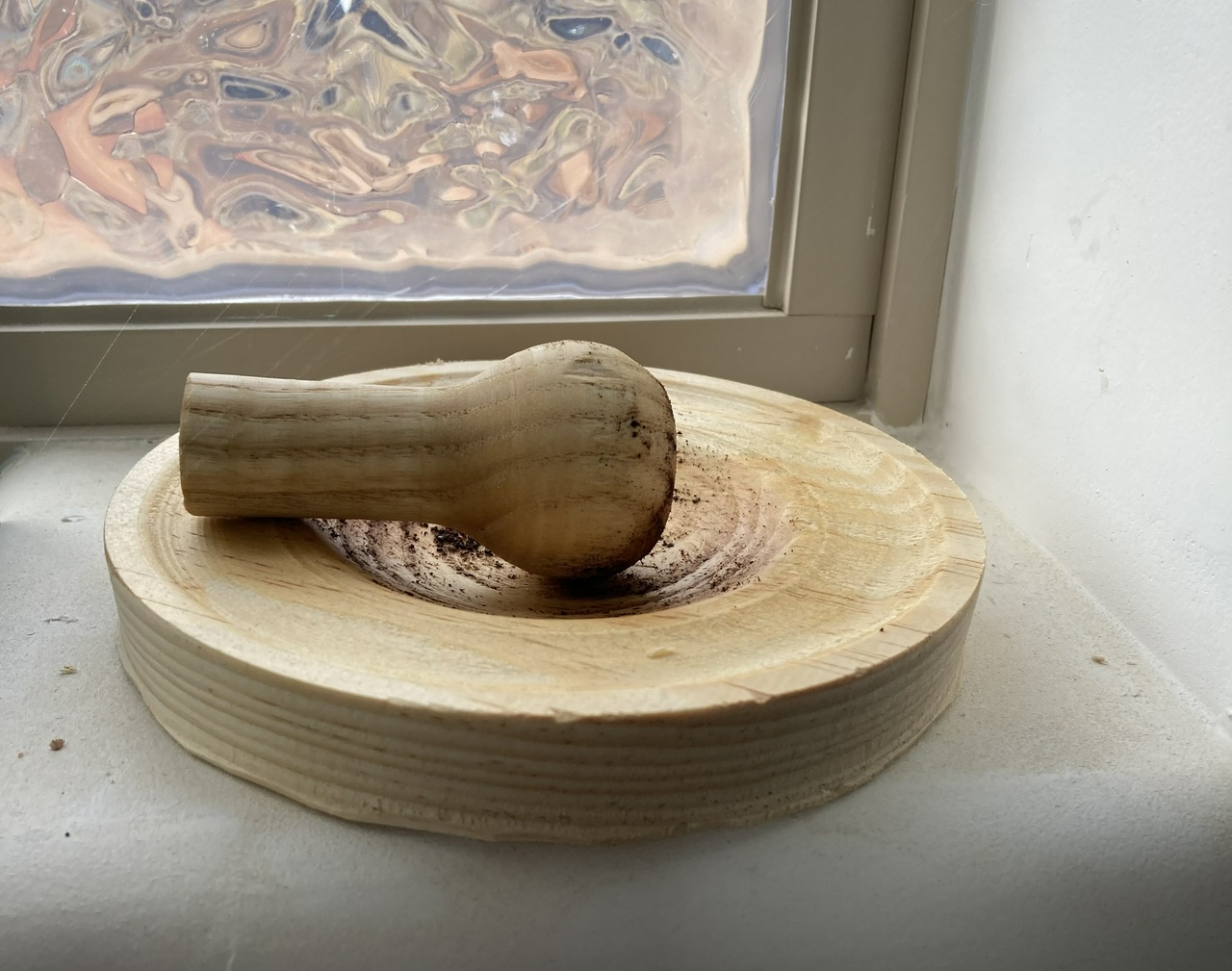Techniques – Turning with the bedan
A while ago I picked up a bedan to add to my set of turning tools, and it's rapidly become one of my favorites, due to its versatility and ease of sharpening (I touch it up on the same stones I use for my smaller chisels, which aren't as flat as the ones for the big chisels and plane-blades – that's probably another blog at some point).
Anyway, back to the bedan. I've mostly been using it as a heavy scraper, which it does pretty well. But that sharp edge doesn't have to be presented as a scraper. It can also be used in a peeling cut to rough a spindle in a big hurry, or, as I practiced today, to do planing cuts like a skew on steroids. (If you don't know what the various cuts are, go read Simplifying the Skew now. It'll clear things up.
So, I started practicing planing cuts. The huge bevel of a bedan means that riding the bevel is pretty idiot-proof. Even I can see and feel that big bevel rubbing on the piece I'm turning. The only trick is not catching the side and inadvertently using it as a scraper, which will push the bedan into the piece, causing a bigger catch with the edge… bad juju. But the tool is so heavy, it'll just plow through the wood and remove a giant divot. No real worry about breaking a 3/8” square piece of tool steel with mere wood.
I ripped a chunk of SPF (spruce pine fir) construction tubafor into two squarish two-by-twos, and chucked it up. Put a live center in the tailstock to hold it straight. I've found when I'm trying a new technique, using a chuck on the headstock and a live center on the tailstock makes it almost impossible to have a catch that heaves the piece of wood around the room. Not totally impossible, but almost. Safety first, kids!

My first ball went really well. Wow! This was using the same tool I had just used to rough the piece to round, and there was wood everywhere. And then to get a finish like this with the same tool… Wow!
The second one… well… I started having problems.

See that spiral on the left of the frame? That's a catch anyone learning the skew will recognize immediately. But it wasn't that bad or scary. It just bugged me. Wait! What's with my tool-rest? Or, it's full of notches from my six months of learning to turn, and sometimes having… boo boos.

After addressing that with a flat bastard file, the rest felt a lot better and my bedan didn't catch in the divots causing problems with my practice.


That second one is a bit of wood planed off near the end of the ball. That's one heavy “curly”.



Things weren't all sunshine and puppies, but I feel like I made some progress this morning.
Here's the one-shot explanation if you want to try it yourself. For a planing cut, similar to rolling a bead with a skew, you want the edge of the bedan somewhere around 70 degrees away from parallel to the piece. Keep the top edge of the bevel just clear of the piece, so it doesn't act like a scraper, and rotate the bedan to keep the bevel tracking down into the v-groove you cut before starting the ball.

That's about what I learned this morning. I've got five more chunks of tubafor to practice on over the next five days. I'll try to post again as I figure out more.
Edited to add: my afternoon practice piece went very well. I practiced planing cuts, as well as paring cuts and turned the following piece:

I was proud enough of it that I finished it by sanding it, then applying my homemade friction finish (linseed oil and shellac).

Here's a closeup of where a knot made for some very tricky grain. The bedan cut through it pretty cleanly. Note that this is after less than 3 hours of practicing with the tool.

Techniques Contents #woodworking #woodturning #technique
Discuss... Reply to this in the fediverse: @davepolaschek@writing.exchange





